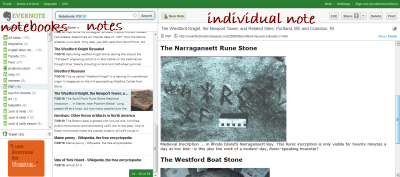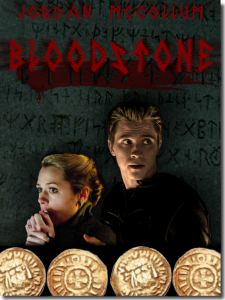So, how was your November? I didn’t want to report on Nano yesterday because I didn’t want to put pressure on the people rushing for the finish line. I hope you made it, too!
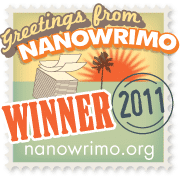 As for me, I pretty much beasted Nano. I was actually trying to do Candace Havens’s Fast Draft method, with 5000 words a day, but I was too chicken to admit it publicly. I’d only ever written that much in a day once before.
As for me, I pretty much beasted Nano. I was actually trying to do Candace Havens’s Fast Draft method, with 5000 words a day, but I was too chicken to admit it publicly. I’d only ever written that much in a day once before.
But, with help from 27,000 words at a writers’ retreat the first weekend of November, I hit 50,000 words on November 8 and kept write right on typing until I reached 78,000+ and THE END on November 14. That’s an average of over 6000 words a day—and I took Sundays off. So that November 30 finish line didn’t mean as much to me this year as it did last year for my Half-no (25,000 words on a WIP).
Now, how was the experience? It would seem like writing that much in a day is insane, awful, grueling, leaving time for nothing else. Candace Havens actually addresses these concerns—you should see the list of all the things she did while pumping out 5000 words a day. Raising three kids five and under, fixing dinner every night and keeping us all in clean underwear doesn’t sound like quite the challenge.
The purpose of fast drafting is to tap into your subconscious understanding of the characters, to get the story on the page, to let the storytelling and character-creating part of your brain take over and run as fast as it can. And in that respect—and the respect of churning out a first draft in two weeks—I’d have to say this was a rousing success.
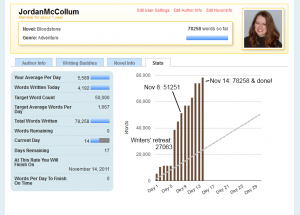
In fact, this is the most fun I can remember having in a first draft since . . . the book that will be my first published novel. I see a lot of parallels between the two writing experiences. The novels themselves are quite different (though I did manage to bring in an aspect of forbidden love again) but I can see that many of the things I had to work on and revise with that manuscript are the things I’ll have to work on with this one. Which is convenient, since I’ve got experience fixing those!
However, some things fell a part just a little bit too much in my real life—apparently, in November, it’s advisable to wear more than just underwear (okay, that’s advisable year-round), and my children need more face time with me. At this point in my life, the balance can’t go quite this far to writing for very long. I’d be plenty happy with a first draft in three weeks or a month—since my record before this was about two months—especially if it wasn’t quite so stressful on my family.
Oddly enough, though, I got up by about seven and to bed by about midnight every day I fast drafted, but since then—nuh uh. That I could do with a bit more of. I worked very hard to maintain some semblance of structure and routine in the house, and I’m thinking I might get back to that, even though I kind of hated it.
Aaand then there’s the book. It was a fairly decent first draft—easier not to leave too many loose ends when you only wrote the beginning two weeks ago—until I thought “Hm… my heroine’s inner conflict over X is kinda weak, and I’ve always wanted to have a character with X^4 conflict—waaaait a minute, that would work!” And I rewrote the confront-the-conflict scene at about the 5/8ths point . . . but the rest of the book doesn’t reflect that now, and there’s ZIP transition and resolution from that. I know this new conflict is right for the character—I just have to make the rest of the book reflect that. And also fix the boring parts, the confusing parts, the underdeveloped parts . . .
What? Oh, yeah. That’s called revision.
But, hey. I’m ending the month with a publisher, a completed first draft and a ton of fun in the interim. I’m WAY more than okay with that.
Now it’s your turn: tell me, how did your November goals go?
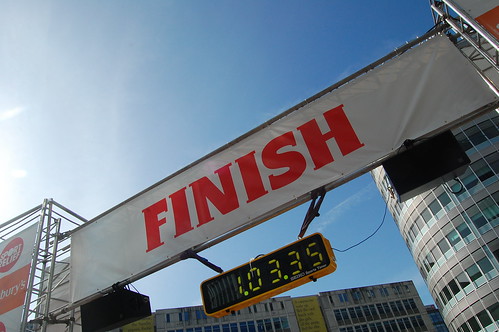
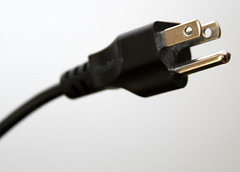


 And then I found
And then I found 